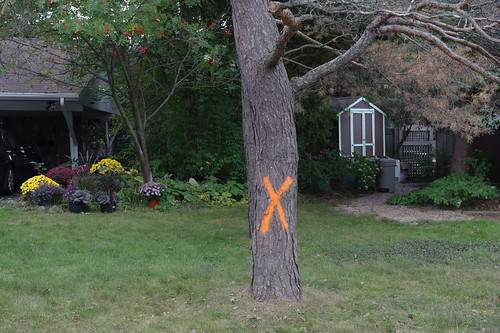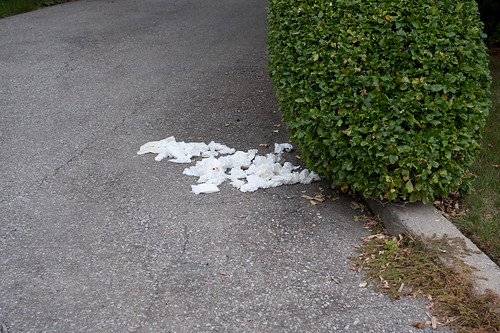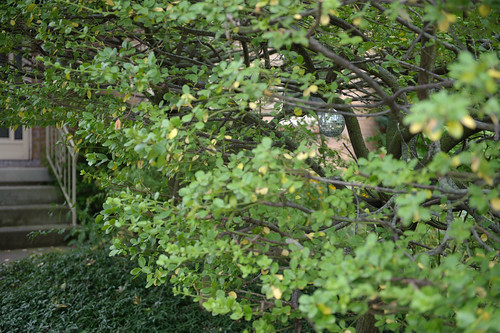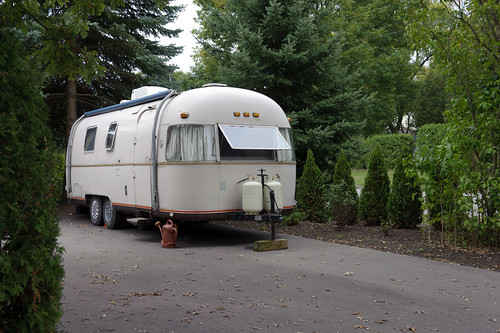Wow. It’s amazing how fast time flies when you’ve just had a baby. I blinked and almost more than three months have passed (I’ve now been trying to write this post for more than two four weeks). Time has a different character with a new baby – it passes both quickly and slowly. Several hours can disappear when you meant to go out somewhere but somehow it just hasn’t happened between the feedings and sleeps and diaper changes. You can glance at your baby’s sleeping face and suddenly half an hour’s gone and you realize you completely lost track of whatever anyone in the room said or what happened on the tv. The days take on a sameness, so you can’t really remember whether a particular detail took place today or yesterday or last week. But that’s not what I wanted to blog about.
In the last couple of several weeks I’ve watched two three great documentaries on TVOntario, completely by accident. The first was about Lucian Freud. I wasn’t familiar with his work before, but I loved what I saw in the film. So much emotion in his portraits. The film was almost entirely interviews with his subjects, mostly ex-lovers and family, with some famous people thrown in. And they pretty much all talked about how long and physically grueling sitting for him was. One woman said she sat for three to four hours at a time, four to six nights a week for three months. That’s a lot of time to share quiet space with someone. His daughters talked about how it was pretty much their only chance to spend time with their father, which was why they kept doing it. I don’t know much about painting, but I bet that’s how he gets so much emotion in his paintings — because with so many hours of watching the sitter, it’s all there, and then some. Although you can’t put that amount of time into a single photograph, his process made me think of the process for long-term photography projects. When you make some images (or brush strokes) then check in with your subject and see whether the pictures fit then adjust with more pictures and so on until eventually you have a body of work that fits your subject.
I think it’s that checking in process that’s been missing from my projects until my derby girls project. Granted, the project isn’t really about derby at all, but I’ve been at it long enough now to see that the work I’ve produced so far still has holes. If you look at the work I’ve made so far, there are women or types or women missing from the project that are part of derby. But I’ve gone off on a tangent now.
The next was a documentary about Disfarmer. I have to confess I’ve never had much fascination with old studio portraits. No idea why, but it’s definitely a failing I should try to address. What I liked about the documentary was the differing views on his work. One collector said Disfarmer’s portraits “are like psychological bullets” that cut right through to the real person. Or something like that. Another man, who lives in the town Disfarmer lived and worked in, said he doesn’t see that at all, all he sees are people who are trying to follow what would surely have been Disfarmer’s instructions (due to the slow shutter speed) to hold very still and not to blink. Another commenter talked about how every single child in his photographs looks scared. I find myself leaning towards the latter reading, and I like photographs of people who look uncomfortable being photographed. I also don’t understand how someone can say a portrait pierces to the essence of a person, unless they know the essence of that person quite intimately. I’ve heard versions of that idea about other photographers, and I never quite understand it.



My favourite part of the documentary, though, was the speculation around the black lines that appear in his portraits made with a white background (most have a black background). Was it deliberate or accidentally? Was it just because there wasn’t enough light to use the black background and the white background needed tape to hold it together? Had he seen some of Mondrian’s work and liked it? Nobody knows. I like to think there was some practical reason for the lines being there, and he chose to work around them.
Yesterday I watched My kid could paint that. It’s about a four-year-old who took the art world by storm with her abstract expressionist paintings around 2005 and the controversy of whether she actually painted the paintings. As the parent of a five-year-old, I have a hard time believing that her father didn’t help at all – we often suggest different techniques for handling the paint or paper or whatever. Sometimes I give him ideas and he decides whether he wants to do it. And someone had to suggest she roll a background colour on and let it dry before applying more colours. A child might come up with that idea him/herself but I doubt they’d apply it so thoroughly. That said, I found myself less interested in whether she actually painted them herself and more disturbed by the way her father and his friend, a gallerist, pushed her paintings with very little thought as to the impact on her then and in the future. Especially the gallerist, who said outright that he hadn’t been able to be part of that art world until he started promoting Marla’s paintings. I also enjoyed the film’s meta-ness, with a number of people questioning the filmmaker directly as to his intentions and footage of him questioning himself.
I guess all this is to say that if you live in Ontario, you should keep your eye on TVO, especially on Thursday nights around 9 or 10. If you don’t live in Ontario, TVO does also have a lot of its documentaries online the Disfarmer one is there, although I can’t find the others).






